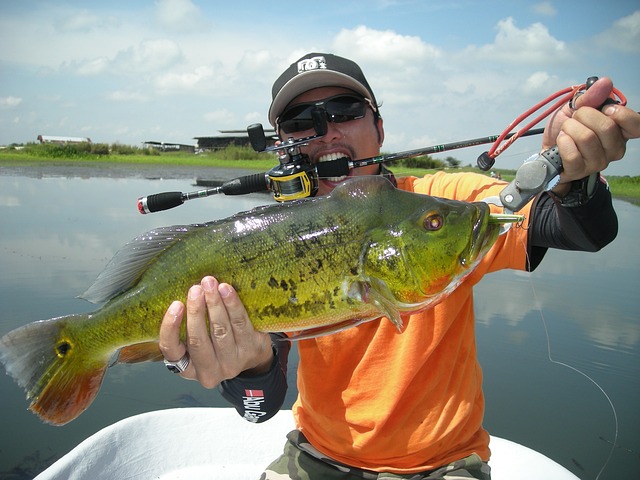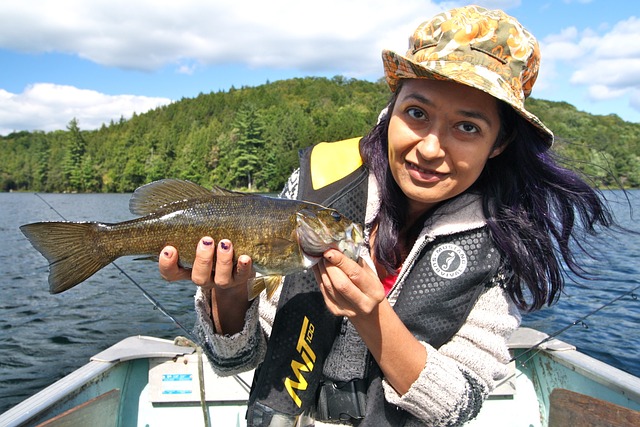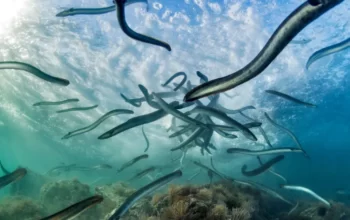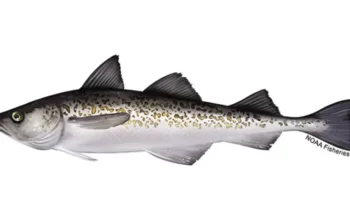Although bass in the north appear to live longer—up to 15 years—they don’t seem to grow as big as their southern counterparts, who only live for about 11 years. The environment has a significant impact on the age and growth rate of bass, just like it does for all other wild animals.
Bass’s lifespans are influenced by a variety of elements, including water temperature, food availability, fishing pressure, predator abundance, water levels, and vegetation. Getting a precise number is difficult because these factors differ from lake to lake and state to state.
All of the lower 48 states, Canada, Mexico, and parts of Cuba are home to bass. They are generally easy to catch and will eat almost anything that gets in their way. Despite not being the largest fish around, they put up a strong fight and frequently break the surface with some acrobatic displays. Here are a few questions you might have about bass.
Table of Contents
How Long Does Bass Live?
The further north they are in the country, the longer their lifespan. Although they don’t get as big as their southern counterparts, they can live up to 15 years.
Generally speaking, a bass’s ability to survive will be based on a variety of variables.
A precise number cannot be determined because variables exist from lake to lake and state to state.
The environment, temperature, and weather have a big impact on how long bass live, as well as how quickly they age and develop.
How Old is a 5 Pound Bass
Depending on the species, a 5-pound bass could be anywhere between 4 and 15 years old.
Bass in the south will be much younger than their northern counterparts.
The length of the growing season and warmer temperatures all have a significant impact on the bass’s rate of growth.
How Old is a 10 Pound Bass
Particularly for a Florida species bass, being big does not always imply age.
A 10-pound bass was only four and a half years old, according to a largemouth bass expert who used the bones in the fish’s ear to make this determination.
A 10-pound bass typically grows over the course of 9.5 to 11 years. But there are numerous contributing factors. This average was determined through a Florida study of 800 largemouth bass.
How Fast Does Bass Grow?
Bass will grow at a rate that is heavily influenced by its environment and food supply. However, in general, bass will grow more quickly in the south, where there is an abundance of food.
The quality of the water, the availability of food, and the climate all affect how quickly largemouth bass grow.
Young Bass Growth Speed
It can be difficult to predict exactly how long young bass will be when they are fully grown because they are constantly growing and developing! The length of the growing season and the temperature of the water are two important factors.
After the first year, a one-year-old largemouth bass typically reaches a length of 2.5 to 8.5 inches.
A bass can reach a height of 10 inches after its second year. Although, after the third year, they typically reach this length.
Bass Growth Speed in Ponds
Bass tend to grow faster in ponds than lakes. This is due to the abundance of various items in ponds, which makes it simpler for bass to obtain the food they require for better development.
This also depends on elements like the food source and water quality.
Ponds can also warm up more quickly than lakes and keep the bass’ metabolism elevated for longer.
Only the habitat’s size will allow bass to grow. Therefore, if the bass are in a small pond, their maximum size will be lower than it could have been in a larger pond or lake.
Pond fishing for bass can be good all year round because of this reason.
How Long Can a Bass Stay Out of Water before It Dies?
According to various scientific studies performed on this matter, the absolute maximum time that bass or any other fish of this nature can survive out of the water is 20 minutes.
However, 20 minutes is the absolute maximum, and according to studies, in some cases, bass can start to die in as few as 10 or 15 minutes after being caught and not being in the water.
Consequently, it is advised that you snap a photo of your catch as soon as you can for all of you fishermen out there.
Get the fish out of the water, remove the hook, snap a photo, and then return it to the water (safely), ideally all in less than five minutes.
A fish is less likely to suffer harm the shorter it is out of the water.
Recall that because bass gills function by absorbing oxygen from the water, they cannot breathe if their gills are completely dry and they are not submerged.

Do Bass Have Teeth?
You might not even realize it unless you look closely, but bass do in fact have teeth. They possess numerous, tiny, razor-sharp teeth. Unless you catch so many bass that you develop bass thumb, they are so small that they typically don’t present a threat to us humans. The thumb is typically placed inside the mouth of bass while most anglers hold the fish by the lower lip. Your thumb will eventually become scratched up from all of those tiny teeth, just like it would if you were to rub it against coarse sandpaper. Now, a word on how to handle bass properly. Yes, holding them by the lip is preferred, but the way you hold them is very important as well. Holding them horizontally is not recommended because it allows their body to droop more than 10 degrees. You can hold them vertically instead. One hand placed under their belly can assist in supporting their weight and relieve pressure from their mouth. The more a bass grows, the more it will profit from buying used.
Can You Eat Bass?
Yes, bass are unquestionably edible. I want to know if you enjoy eating bass. This one is a matter of preference. I’ve never been a fan of bass flavor. In my opinion, your better eating fish has fish with a firmer, more meaty texture. My father, on the other hand, yells at me each time I return the favor. My mother, who doesn’t eat fish very often, now declares that bass are her favorite species. It turns out that they discovered a recipe that they both adore, and I have to admit, it’s pretty tasty. Actually, there are two methods for preparing bass. I’ll do my best to communicate the details they provided.
Recipe #1
Make sure the bass is fileted to remove the skin. Then bring a pot of water to a boil and sprinkle some salt into it. possibly a teaspoon or even less. The cooking process only takes three minutes. Place the filet on a plate, top with some melted butter, parsley, and a dash of paprika.
Recipe #2
In a manner similar to the first recipe, but instead of boiling in salt water, you place the dish on a baking sheet and bake it. It is seasoned with melted butter, paprika, lemon pepper, seasoning salt, garlic salt, and seasoning salt. Use as little or as much seasoning as you’d like.
The aforementioned information relates to largemouth bass. I frequently eat smallmouth bass, and I find them to be very tasty. When I go fishing down the St. Johns, I typically catch smallmouth bass. We stop halfway down the St. Croix River and eat lunch on the riverbank. We cook them in a cast-iron pan over an open flame and serve them with coleslaw and fried potatoes. Perhaps because I recently had such a wonderful experience, but those were some of the best fish I’ve ever eaten.
Additionally, Sean from ontrackfishing.com has written a piece about eating bass. See his article right here.
Do Bass See Color?
Yes, bass see color; they have rods and cones in their cells, just like humans. Simply put, cones are used in daylight to see color, and rods take over at night to see in black and white. Compared to human eyes, bass eyes have more rods, making them more effective at night vision. Bass see through water, whereas humans see through the air. Since light travels through water differently than it does through the air, color is a product of light. Water has the dual optical properties of absorption and reflection. More deeply a color can pierce the water, the shorter the wavelength. The blue end of the spectrum is visible at all depths in clear water, whereas the red end is absorbed more quickly. Since bass spend a lot of time in shallow water where they can see most of the color spectrum, the color of your bait may have an impact. In water that contains mud or algae, light behaves differently. In this situation, you should use a lure that contrasts with the nearby water.
Ice Fishing for Bass
Many fishermen believe that bass stop biting once the temperature drops below 50 degrees. Although their metabolism does slow down, bass still eat during the winter. Because their habitat shrinks in the winter, bass tend to assemble. They hang out by the few remaining weeds or search for other types of structures to hang out by because many of the weeds die. In the absence of weed lines, search for sharp breaks that emerge from deeper water. Although I don’t specifically fish for bass through the ice, I occasionally pull some up while jigging for panfish or even catch some on a tip-up. They congregate closely together in the winter, and if I do manage to catch one, I usually manage to catch several.
How to Catch & Release Bass Safely?
There are a few guidelines you can adhere to to help ensure that your bass has the best possible chance of surviving if you do decide to practice catch and release fishing.
The goal of catch-and-release fishing is to capture a fish and then release it back into the water, where it will continue to live its life and, ideally, reproduce, replenishing the fish population.
Let’s go over some of the most important tips right now;
- If you haven’t already figured it out, time is crucial. Your fish has a better chance of surviving if you can release it and put it back in the water quickly. Try to finish this entire process from front to back in no more than five minutes, if at all possible.
- You should be aware that fish have slime coats over their skin, which keeps them alive and protects them from infections. So always use wet hands when handling fish. It will take off this slime coating from your hands if they are dry. However, you should wear rubberized gloves if you can’t adequately grasp a fish with wet hands. Wearing cotton gloves will remove and absorb the slime coating, so avoid doing so.
- Use a knotless, rubberized net to remove the fish from the water if necessary if you are unable to get a firm grip on it there. Avoid pulling too firmly on any one area of the fish.
- Always hold the bass horizontally when it is out of the water to reduce stress on it. Because they are accustomed to swimming horizontally, fish can become stressed to the point of death if they are forced to swim vertically.
- If necessary, remove the hook from the fish’s mouth using pliers with a needle nose. Whatever the situation, use caution and always follow the curve of the hook when removing it, whether with pliers or your fingers. Don’t simply rip the hook out of the fish’s mouth because you risk doing irreparable harm that could cause an infection and cause the fish to die.
- Never place your fingers near a fish’s eyes or gills, particularly the gills. The fish will undoubtedly die if its gills are damaged because it will be unable to breathe.
Read about How To Fish For Bass At Night?
Largemouth Bass Age and Size
A really solid bass like is at least five years old and is approaching 6lbs
Even among fish that are the same age and inhabiting the same population sites, there can be a wide range of size variations. Some individuals may simply be pickier eaters who will sample and consume a wide variety of foods and put up a fight to capture larger prey items. Compared to fish that wait for food to come to them, these fish will grow larger and more quickly.
Despite coming from the same spawn, fish that are the same age can differ in length by up to 4 inches. The smallest bass in this age group measured 11 inches in length, while the largest was 15 inches, according to research on a group of bass raised together in a pond. A three-year-old largemouth bass was on average 13 inches long.
Additionally, the weight of largemouth bass does not directly correlate with their age. In reality, a 5-pound bass can be aged anywhere from 7 to 15 years old. To harvest this fish and examine its internal bone structure for confirmation, however, would be the only way to be certain. The size-to-age ratios of all largemouth bass are different and can be influenced by a wide range of variables, including genetics, climate, the availability of food, the amount of time spent in search of food, and more.
Read about How To Catch Largemouth Bass?
Florida Bass Strain Vs Northern Bass Strain
The Florida and Northern largemouth bass subspecies can be distinguished from one another. Although these fish belong to the same species, they are divided into various subspecies. In comparison to the Northern strain, the Florida strain’s skin has a slightly different appearance. The Florida, for instance, will have more scales along its lateral line and smaller scales overall than the Northern.
The Florida strain can grow much more quickly and reach larger sizes because they are found in warmer waters. They are therefore much more frequently chosen when stocking private lakes and ponds in areas with warmer climates.
Final Thoughts
How long bass take to grow and how big they are when they are fully grown are two of the most crucial facts to understand about bass.
The availability of food and the quality of the water affect largemouth bass growth.
Typically, it takes these fish nine to eleven years to reach their full size. But a variety of factors affect how quickly bass populations grow.
According to some fishermen, a largemouth must weigh at least 11 pounds in order to be considered trophy-worthy.
If you’re fishing in competitions or other events where there are prizes, anything between eight and ten pounds is regarded as big.
In the southern states, bass typically grow bigger and faster, but also live shorter lives.
Choosing the correct rigs and lures will sure help you succeed in catching bass.
I hope your bass fishing endeavors are successful.




